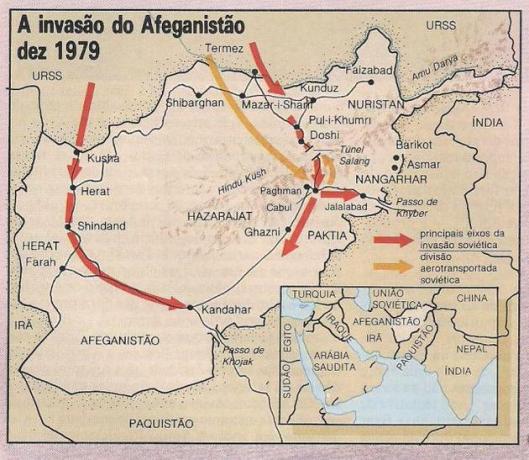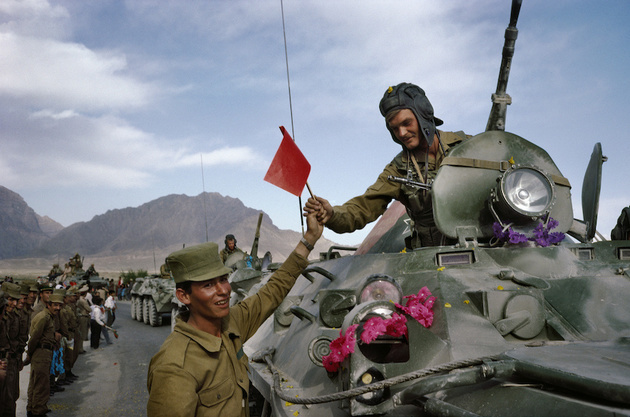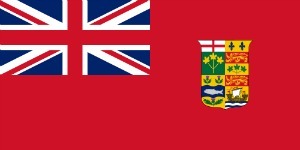THE afghan war starts in 1979. Initially it was a conflict between the USSR and Afghans, and later the US gets involved in the feud.
In this war, which continues to this day, the fight is waged between the United States and allies, against the Taliban regime.
Historical context
The main European countries were practically destroyed during World War II (1939-1945). For its part, the US came out of the war with its industrial park unscathed, began to supply the world market and financially help these countries. In this way, they became the greatest power in the capitalist world.
The Union of Soviet Socialist Republics (USSR), however, became the world's second largest power and aided the countries of Eastern Europe politically and economically.
It also extended its influence to some countries in Asia such as Afghanistan since the proclamation of its republic in 1978.
The US and the USSR have been adversaries since the 1950s This period where both countries engage in ideological disputes is known as Cold War.
The two powers never faced each other on the battlefield directly, but fought in various parts of the world. In this context, the First War in Afghanistan begins.
First War in Afghanistan (1979-1989)

In 1979, a civil war among various Afghan groups. The main ones were those who were allied with Marxism-Leninism and those religious, who were against any foreign ideology. The USSR supports the former, as it considered the country within its sphere of influence.
Therefore, he maintains and supports Afghan President Babrak Karmal (1929-1996) and, in December 1979, he invades Afghanistan, starting the First War in Afghanistan.
The objective was to solidify the Soviet influence that had been deteriorating and intended to pacify Afghanistan because of the rebelliousness of the guerrilla groups mujahideen, following the revolts against the communist regime. Thus, the confrontation is also known as the "Soviet Invasion of Afghanistan".
The US, in turn, took sides in the war and began to economically assist the opposition. Americans are allied with China and Muslim countries like Pakistan and Saudi Arabia.
The USSR occupied the main cities and military bases in Afghanistan and this action was increasingly revolting the rebels.
It was a bloody ten-year confrontation, in which the US fostered the military growth of certain anti-communist Afghan groups. Later, the former allies would turn against the Americans, as Afghanistan came under the rule of the Taliban regime.
US relations with Afghanistan have been shaken by the kidnapping and killing of the US ambassador to Afghanistan.
The already difficult talks with the Soviet Union were also undermined as the US accused them of having been responsible for the event.
Unable to sustain the conflict, in May 1988, Mikhail Gorbachev orders the soldiers to begin leaving the territory. In the conflict, the USSR lost 15,000 people.

The following decades will be marked by civil wars and international interventions in the region, among which, we highlight:
- Gulf War (1990-1991)
- Iraq war (2003-2011)
Second War in Afghanistan (2001 – present)
the attacks of September 11th 2001, in the US, started the Second War in Afghanistan. were executed by al-Qaeda at the behest of Osama bin Laden with the support of the Taliban regime.
At that time he was US President George W. Bush. One of the targets of the attack was precisely the symbol of the country's economic power – the building World Trade Center, known as the twin towers.
The US began attacks on Afghanistan on October 7, 2001, with the support of NATO, but contrary to the wishes of the United Nations (UN). The goal was to find osama bin laden, his supporters and ending the terrorist training camp installed in Afghanistan, as well as the Taliban regime.
Only on December 20 of the same year, the UN Security Council unanimously authorized a military mission in Afghanistan. This was supposed to last only six months and protect civilians from Taliban attacks.
The United Kingdom, Canada, France, Australia and Germany declared their support for the USA.
Battles, bombings, revolt, destruction and thousands of deaths mark this conflict. In May 2011, Osama bin Laden was killed by American soldiers.
In 2012 a strategic agreement is signed between the presidents of the USA and Afghanistan, respectively, barack obama and Hamid Karzai.
The agreement deals with a security plan that, among others, aims at the withdrawal of American troops. However, the nations did not reach consensus on some parts of the agreement, such as granting immunity to US soldiers.
In June 2011, the US began withdrawing its troops from Afghanistan, which was expected to end in 2016.
Consequences of War
The Afghan War continues to this day.
Since then, the UN has made great efforts to seek peace. The UN's job is to try to eradicate terrorism and provide humanitarian aid to Afghans.
Currently, a large part of the population is dying of hunger or lack of medical care, as the country's infrastructure has not yet been rebuilt.
In addition to the misery of the Afghan people, this war resulted in thousands of deaths, psychological problems for the military and billions spent on weapons.
read more:
- Terrorism
- War in Syria
- Refugees
- NATO - North Atlantic Treaty Organization
- Cold War Conflicts


